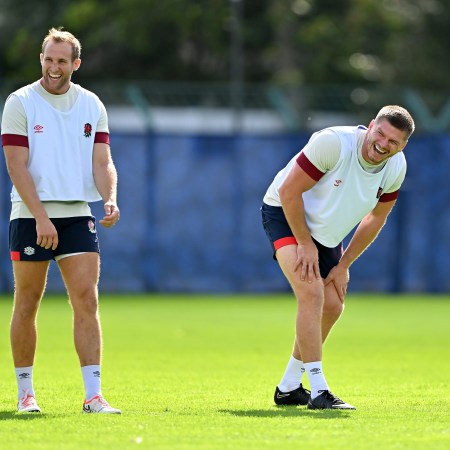Sport psychologists are in agreement that music has an ergogenic impact on exercise. The leading researcher on the topic, Brunel University London’s Dr. Costas Karageorghis, once estimated that listening to music while running can improve performance by 15%. He even called it a “legal drug for athletes.” As Dr. Keith Evans, The Founder and Director of the Atlanta Human Performance Center, explained to InsideHook: “Music helps elicit endorphins and enkephalins, two opioids that are naturally made within the body.”
Is this because music is distractive, though? Or because it’s inspiring? How do we know what sort of genre to prioritize in exercise? Should we roll with whatever we like best, or queue something specific?
Ten Thousand’s Surplus Sale Is Flexing Its Massive, Very Discounted Muscles
Drop and give me…40% off?Fast-Paced Fare
Most of us default to uptempo fare when programming our workouts: rap, rock, EDM, Top 40. The stuff that coaches play for warmups, that’s on at the gym. There may be some nuance to it — i.e., virtual Peloton trainers selecting certain songs for tough climbs and others for cool-downs — but in general, exercise music is fast-paced and exhortatory, throughout the full length of the workout.
For many trainees, it’s easier to stay locked in when a song’s BPM pushes past 140; you can attack your workout with a sense of urgency. We’ve sung the praises of “Big Bootie Mixes” in the past, those Soundcloud mashups that deliriously leap between 15-second splices of 21st-century pop songs. Legions of fans online say they can’t finish their most intense workouts without an assist from Two Friends, the DJ duo behind the concept.
The Case for Classical
At the same time, your workouts shouldn’t always register as intense. You’ll plateau over time, burn out or get injured. Ideally, two to three sessions a week are in Zone 2: the effort level that accesses just 60-70% of your maximum heart rate, which generally involves long, drawn-out “(lazy,” you could say) endurance exercise.
Your music of choice should be adjusted accordingly. That could mean eliminating music altogether (podcasts), or finding a gentler variation of a genre you like. It could also mean giving classical music a chance.
The near-300-year-old genre is perfect for an endurance session, in that it’s more of a companion than fuel. Studies have linked classical music with increased blood flow and decreased cortisol levels, meaning it’ll help ease you into a state you can maintain for 45 minutes or more. The lack of lyrics, meanwhile, allows you to project your in-moment feelings or daydreams onto the music.
Classical music isn’t ambient, of course. It has powerful allegros and crescendoes. Beethoven’s Fifth Symphony can reach heights as heart-pumping as Big Bootie’s Volume 15. (Excuse the sacrilege.) But by and large, classical music’s tempo is slower and the sensibility is more contemplative, inviting you in for an immersive and cerebral experience.
Consider: Instead of inciting you to white-knuckle three more reps on the bench press, classical has the capacity to just float you elsewhere…helping you coast through an outdoor jog or cycle that might’ve otherwise put you in a mental blender.
Feel free to experiment a little bit. If you’re purely looking to play the BPM game, and need something deflecting to listen to during a cardio session, try boring music, lofi, brown noise or gamma waves. Believe it or not, your muscles may be pining for a bit of Mozart.
Whether you’re looking to get into shape, or just get out of a funk, The Charge has got you covered. Sign up for our new wellness newsletter today.
















![Ulysse Nardin BLAST [AMOUREUXPEINTRE]; Shinola Circadian Monster 36; Chopard L.U.C LUNAR ONE; Tudor Black Bay Chrono Flamingo Blue; Mark II Fulcrum 39](https://www.insidehook.com/wp-content/uploads/2025/01/Watch-Header.png?resize=750%2C500)

